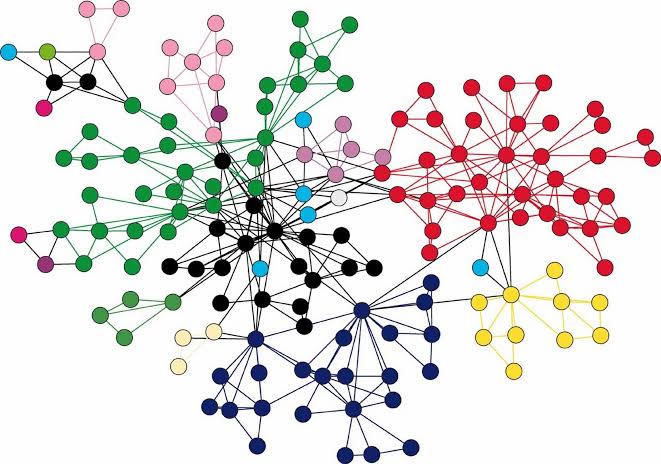Exploring Graph Databases: Basics, Implementation, and Uses
 Abhishek Jaiswal
Abhishek JaiswalTable of contents
- # Introduction :
- # What is a Graph Database?
- # Key Concepts:
- # Graph Database vs Relational Database: Similarities and Differences
- # Core Components of Graph Databases
- # Examples of Graph Databases
- # Use Cases of Graph Databases
- # How to Implement a Graph Database
- # Example of Cypher Queries in Neo4j
- # Best Practices for Using Graph Databases
- # Conclusion
- # FAQs

# Introduction :
In the modern era of data-driven decision-making, managing complex and interconnected data efficiently is crucial. Traditional relational databases often fall short in handling these intricate relationships. Enter graph databases—a powerful solution designed to model and query highly connected data. This comprehensive guide will delve into what graph databases are, how they differ from relational databases, their core components, popular examples, and real-world use cases.
# What is a Graph Database?
A graph database is a type of NoSQL database that uses graph structures with nodes, edges, and properties to represent and store data. This structure allows for efficient data modeling and querying, especially when dealing with complex relationships.
# Key Concepts:
- **Nodes**: Represent entities or objects (e.g., a person or product).
- **Edges**: Represent relationships between nodes (e.g., a person "likes" a product).
- **Properties**: Key-value pairs that provide additional information about nodes and edges.
- **Labels**: Categorize nodes to define their roles within the graph.
# Graph Database vs Relational Database: Similarities and Differences
# Similarities:
- Both store data in a structured format.
- Both support ACID (Atomicity, Consistency, Isolation, Durability) properties.
- Both can handle complex queries.
# Differences:
- **Schema Flexibility**: Graph databases offer more flexibility, allowing for easy schema modifications.
- **Data Modeling**: Graph databases use nodes and edges, whereas relational databases use tables and JOIN operations.
- **Performance**: Graph databases excel at querying relationships, often outperforming relational databases in such scenarios.
- **Scalability**: Graph databases can scale more efficiently for highly interconnected data.
# Core Components of Graph Databases
1. **Nodes**: Fundamental units representing entities.
2. **Edges**: Define the relationships between nodes.
3. **Properties**: Attributes or metadata for nodes and edges.
4. **Labels**: Tags used to categorize nodes.
# Examples of Graph Databases
1. **Neo4j**: A leading graph database known for its robustness and performance. Uses the Cypher query language.
2. **Amazon Neptune**: A managed graph database service supporting both Property Graph and RDF models.
3. **OrientDB**: A multi-model database supporting graph, document, key-value, and object models.
4. **ArangoDB**: A versatile multi-model database with native graph, document, and key-value support.
# Use Cases of Graph Databases
1. **Social Networks**: Manage and analyze user interactions and relationships.
2. **Recommendation Engines**: Build personalized recommendations based on user behavior.
3. **Fraud Detection**: Identify fraudulent patterns through complex relationship analysis.
4. **Knowledge Graphs**: Integrate diverse information sources to derive insights.
5. **Network and IT Operations**: Optimize networks by analyzing device relationships.
# How to Implement a Graph Database
# Step 1: Choose the Right Graph Database
Select a graph database that fits your project's requirements. Consider factors such as scalability, performance, query language, and ease of integration.
# Step 2: Design Your Data Model
- Identify entities (nodes) and their properties.
- Define relationships (edges) between entities.
- Use labels to categorize nodes.
# Step 3: Set Up Your Graph Database
- Install your chosen graph database (e.g., Neo4j).
- Configure necessary settings and optimize for performance.
# Step 4: Load Your Data
- Prepare your data in a format compatible with the graph database.
- Use import tools or scripts to load data into the database.
# Step 5: Query Your Data
- Use the appropriate query language (e.g., Cypher for Neo4j) to run queries.
- Leverage graph algorithms for deeper insights.
# Example of Cypher Queries in Neo4j
**Find friends of a person named 'Alice':**
`cypher
MATCH (alice:Person {name: 'Alice'})-[:FRIEND]->(friend)
RETURN friend.name
**Find common friends of 'Alice' and 'Bob':**
`cypher
MATCH (alice:Person {name: 'Alice'})-[:FRIEND]->(commonFriend)<-[:FRIEND]-(bob:Person {name: 'Bob'})
RETURN commonFriend.name
**Find the shortest path between 'Alice' and 'Charlie':**
`cypher
MATCH path = shortestPath((alice:Person {name: 'Alice'})-[:FRIEND*]-(charlie:Person {name: 'Charlie'}))
RETURN path
**Find all products liked by friends of 'Alice':**
MATCH (alice:Person {name: 'Alice'})-[:FRIEND]->(friend)-[:LIKES]->(product:Product)
RETURN product.name
**Count the number of friends each person has:**
`cypher
MATCH (person:Person)-[:FRIEND]->(friend)
RETURN person.name, COUNT(friend) AS friendCount
# Best Practices for Using Graph Databases
1. **Indexing**: Use indexes to speed up query performance.
2. **Data Modeling**: Keep your data model simple and intuitive.
3. **Query Optimization**: Optimize queries for better performance.
4. **Scalability**: Plan for scalability from the outset.
5. **Security**: Implement robust security measures to protect your data.
# Conclusion
Graph databases offer a powerful solution for managing and querying complex, interconnected data. With their flexible schema, intuitive data modeling, and efficient performance, they are ideal for a wide range of applications, from social networks to fraud detection. By understanding the core components, differences from relational databases, and best practices, you can effectively leverage graph databases for your next projects.
# FAQs
**Q1: What is a graph database used for?**
Graph databases are used to store and query complex and interconnected data, such as social networks, recommendation engines, and fraud detection systems.
**Q2: How does a graph database differ from a relational database?**
Graph databases use nodes and edges to model data, while relational databases use tables and JOIN operations. Graph databases offer more flexibility and performance benefits for querying relationships.
**Q3: What are some popular graph databases?**
Popular graph databases include Neo4j, Amazon Neptune, OrientDB, and ArangoDB.
**Q4: What query languages are used with graph databases?**
Common query languages for graph databases include Cypher (Neo4j), Gremlin (Apache TinkerPop), and SPARQL (RDF data).
Subscribe to my newsletter
Read articles from Abhishek Jaiswal directly inside your inbox. Subscribe to the newsletter, and don't miss out.
Written by

Abhishek Jaiswal
Abhishek Jaiswal
As a dynamic and motivated B.Tech student specializing in Computer Science and Engineering, I am deeply driven by my unwavering passion for harnessing the transformative potential of data engineering, devops, and cloud technologies to tackle multifaceted problems. Armed with a solid foundation in the Python programming language, I possess an extensive skill set and proficiency in utilizing a comprehensive stack of technical tools, including Apache Airflow, Apache Spark, SQL, MongoDB, and data warehousing solutions like Snowflake. Throughout my academic journey, I have diligently honed my abilities in problem-solving, software development methodologies, and fundamental computer science principles. My adeptness in data structures and algorithms empowers me to approach challenges with efficiency and creativity, enabling me to break down complex problems into manageable tasks and craft elegant solutions. In addition to my technical prowess, I bring exceptional communication and collaboration skills to the table, allowing me to thrive in team settings and make meaningful contributions to collaborative projects. I am highly adaptable and excel in dynamic environments that foster continuous learning and growth, as they provide me with the opportunity to expand my knowledge and refine my skills further.